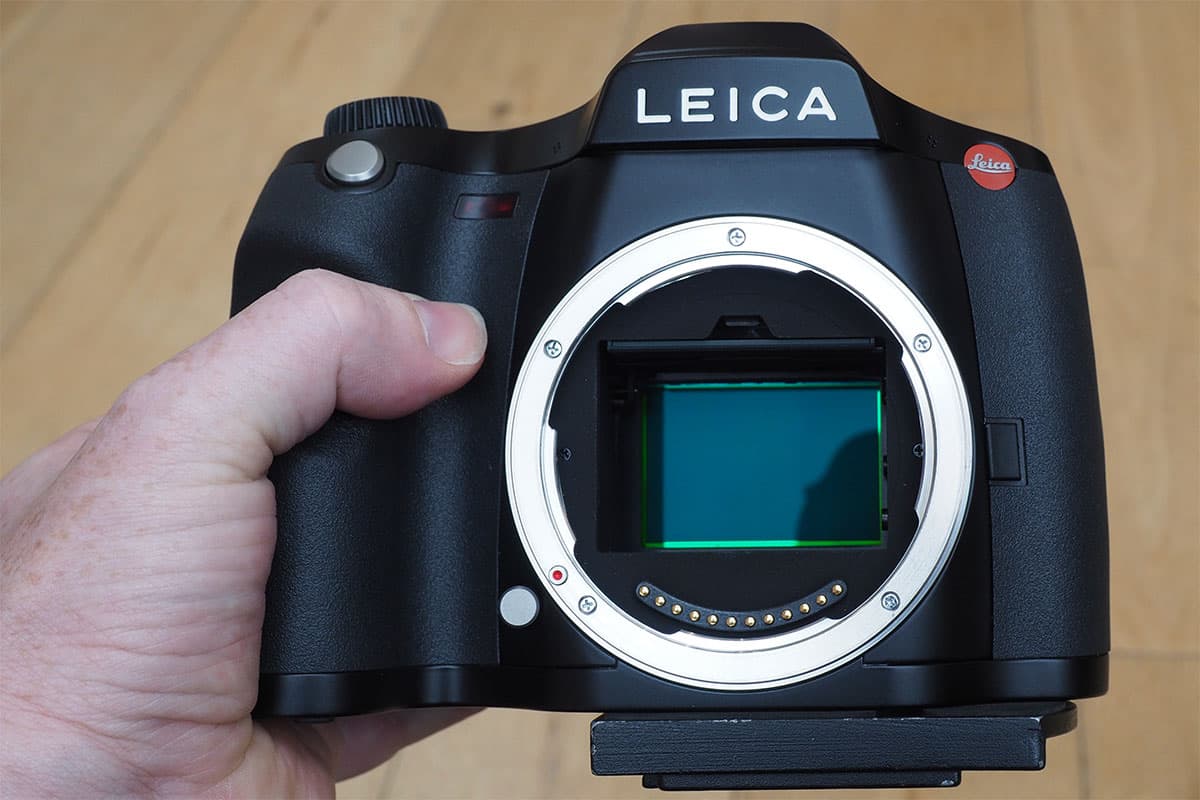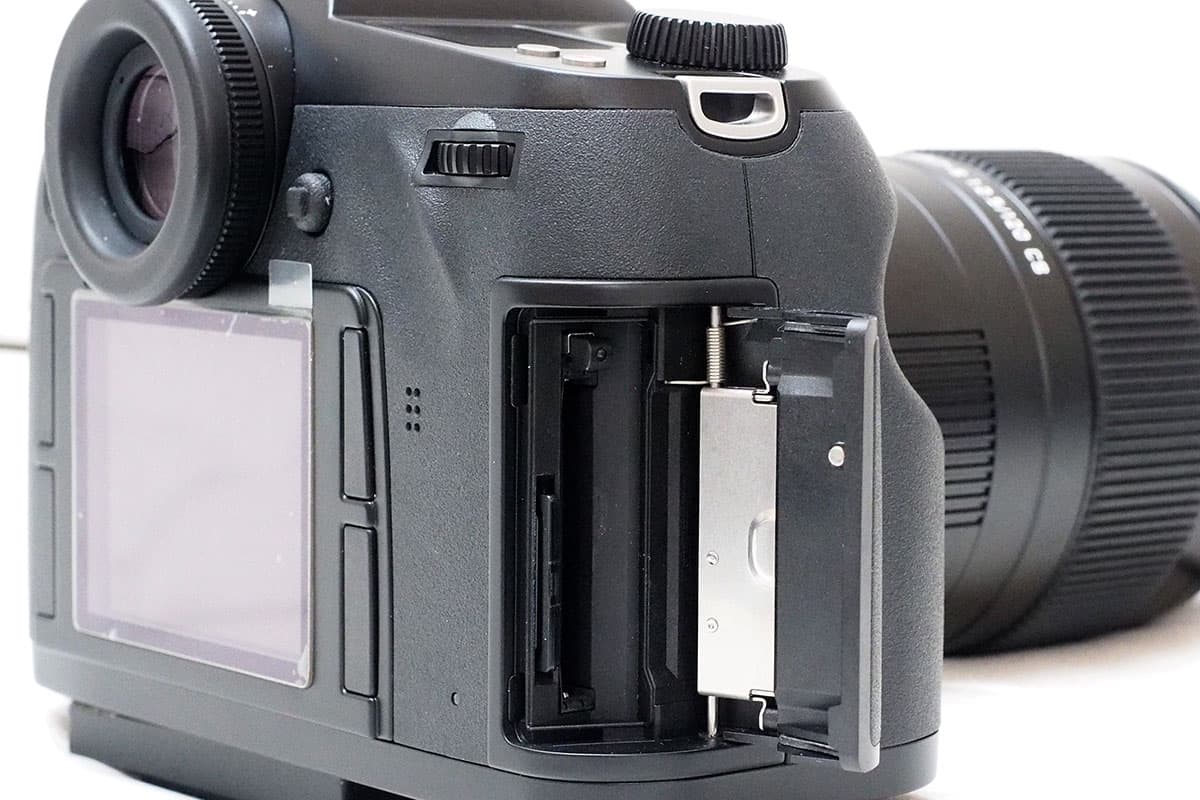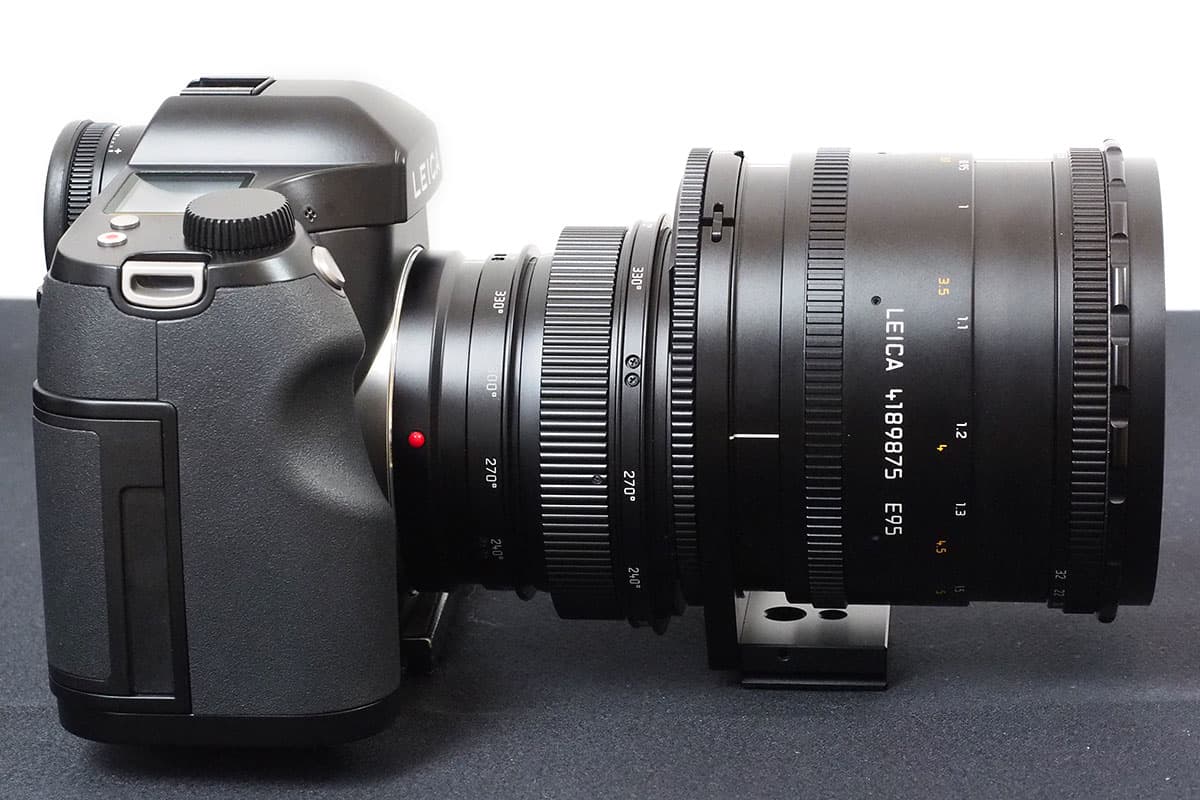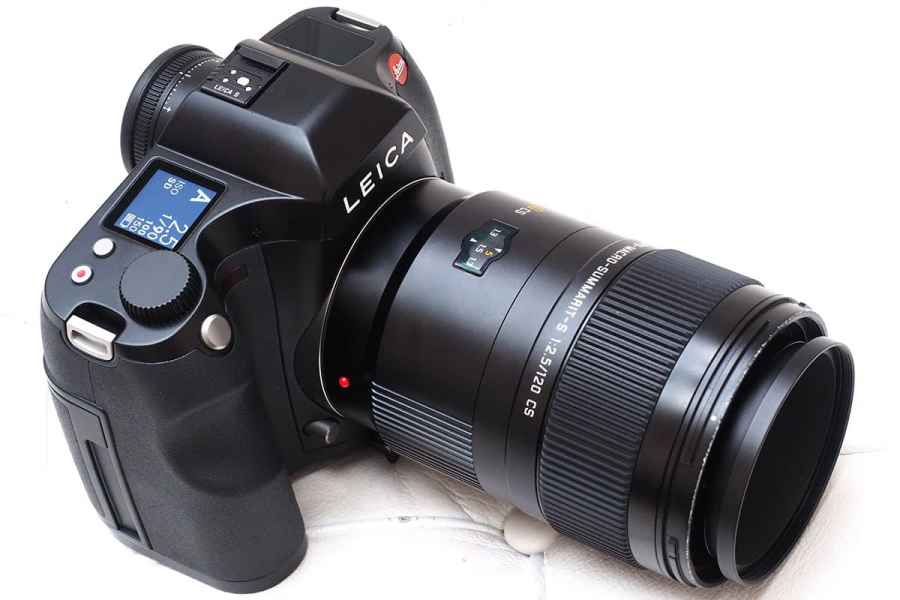Leica S (Typ 007) Review: Hands-on First Look
First shown in prototype form at Photokina 2104, the Leica S (Typ 007) medium format DSLR is based around an all-new Leica designed 37.5-million-pixel CMOS sensor. The camera is a successor to the CCD-based Leica S2 that was first shown in 2009, and which continues on sale in a slightly redesigned form as the S-E (Typ 006). The Typ 007 is available to buy now, priced £12900 body only.
Leica S (Typ 007) at a glance:
- 37.5MP Leica ProFormat (30 x 45mm) CMOS sensor
- ISO 100-12500
- Leica S mount
- 3.5fps continuous shooting, approx 35 frames buffer
- Records DNG format raw (16 bits per colour channel)
- 0.87x viewfinder magnification, 100% crop
- 3” 921,600 dot LCD
- Cine 4K video recording (Super 35 crop)
- Full HD video using full sensor width
- Weatherproof construction

Leica’s proprietary ‘ProFormat’ sensor measures 30 x 45mm
According to Jason Heward, Managing Director of Leica UK, the Leica S (Typ 007) is ‘groundbreaking in terms of medium format’. With its weathersealed body that’s similar in size to high end full frame DSLRs and 3.5 fps continuous shooting, it’s the ‘most compact and reliable’ and ‘fastest digital medium format camera’ yet made. In essence it provides all the features that we’ve come to expect from a modern DSLR, including live view and Wi-Fi connectivity, but with a medium format sensor promising higher image quality.
The 37.5-million-pixel Leica-designed CMOS sensor is approximately 60% larger in area than full frame, and doesn’t use an optical low pass filter for maximum pixel-level sharpness. Leica says it offers up to 15 stops dynamic range, and much lower noise at higher ISOs than the CCD chip used in previous models in the series. It’s supported by a new Maestro II processor that can process DNG raw files twice as fast as its predecessor, and JPEG files 4x as fast.
The newly designed shutter is rated to 150,000 cycles – up from 100,000 on the S2 and S-E – and offers speeds from 60 seconds to 1/4000 sec. The camera also has dual card slots – CF and SD – and can record files to both so you always have a backup. Write speeds to the CF card have been doubled, too.

Twin card slots accept Compact Flash and Secure Digital cards
For shooting with the optical viewfinder, the S2 has a single-point phase detection AF system that users of high-end Nikon and Canon SLRs may find a little limiting. Switch to live view, though, and phase detection AF is available across the entire frame.
Like most modern cameras (although relatively few professional DSLRs) the Leica S has built-in Wi-Fi for connection to a smartphone or tablet. The Leica S app enables image transfer for sharing with customers and clients, along with full remote control of the camera including live view. Tethered shooting from a desktop computer is also on offer via the Leica Image Shuttle 3 application through the USB 3 port, and files can saved to either the computer or the camera’s own memory card while shooting.

Leica’s S mount lens range covers focal lengths of 24mm to 180mm, including a 120mm f/5.6 tilt-and-shift optic
The Leica S2 can record Full HD 1920 x 1080 video at 24, 25 and 30 fps using the full width of the sensor. Cine 4K recording (4096 x 2160) at 24fps is also available, although from a relatively small Super 35 crop (approx 19 x 25mm) at the centre of the frame. Clean footage can be output over HDMI, and an external stereo microphone used to record sound.
In terms of controls the S2 uses the same system as previous generations of the camera, which means that it’s rather different to typical DSLRs – many users will probably find it a bit confusing at first. It has twin command dials for changing exposure settings, top and rear, and the rear dial can be clicked inwards and rotated to change exposure mode. Compared to its predecssor, though, it gains two additional top-plate buttons, to activate live view and video recording. Aside from that, everything is changed using four keys next to the LCD and a small joystick on the back of the camera. It’s all a bit alien at first to anyone used to conventional button and dial led camera designs, but most photographers should pick it up soon enough.
In hand the body feels just slightly bulky, and certainly very robust – it gives the impression that it would stand up to pretty much anything you could throw at it. The large viewfinder will come as a revelation to anyone who’s only used full frame systems up until now, and an LCD below the focusing screen displays a good range of shooting information.
Image samples
I had a brief opportunity to take a couple of sample images with the Leica S (Typ 007) at Leica UK’s launch event for the camera. It’s pretty clear that the camera will offer extremely impressive detail at low ISOs, thanks to the combination of its high resolution sensor with no low-pass filter and excellent lenses. The examples below were shot using the APO-MACRO-SUMMARIT-S 120mm f/2.5 lens with the camera mounted on a sturdy tripod. The DNG raw files were processed in Adobe Camera Raw.

Leica S (Typ 007) + 120mm f/2.5 lens, ISO 100 f/5.7

Leica S (Typ 007) + 120mm f/2.5 lens, ISO 100 f/5.7, 100% crop
At ISO 100 the camera gives excellent detail in the in-focus regions of the image, while the 120mm f/2.5 macro lens gives beautiful bokeh with smooth and attractive out-of-focus regions.

Leica S (Typ 007) + 120mm f/2.5 lens, ISO 3200 f/8

Leica S (Typ 007) + 120mm f/2.5 lens, ISO 3200 f/8, 100% crop
Boost the sensitivity to ISO 3200 and detail rendition is still pretty impressive, but noise has started to become obviously visible too.

Leica S (Typ 007) + 120mm f/2.5 lens, ISO 12,500 f/8

Leica S (Typ 007) + 120mm f/2.5 lens, ISO 12,500 f/8, 100% crop
At the top sensitivity of ISO12500, though, noise has started to overwhelm all of the finest detail, and more worryingly some pattern noise (or banding) is visible too. This isn’t too impressive given the sensor size; modern full frame DSLRs would probably do rather better at this point.
First Impressions

The Leica S (Typ 116) fitted with the TS-APO-Elmar-S 120mm f/5.6 ASPH lens, with vertical shift applied
From my brief time using the Leica S2 (Typ 007), it’s clear that this is a pretty unusual camera with perhaps no direct competitor. On one level it could be seen as going head-to-head with the latest high resolution full frame cameras like the Canon EOS 5DS / 5DS R, Nikon D810, and Sony A7 R II. But with a body only price of £12900 it’s clearly aiming at a different level of quality, with Leica’s S-mount lens line key to its overall appeal.
The other camera it will inevitably be compared against is the extremely impressive Pentax 645Z. This uses a 51.4MP Sony-made CMOS sensor of roughly the same area, but with a 4:3 aspect ratio, and at £6800 body only costs rather less than the Leica. However it’s distinctly bulky in comparison.
The Leica S is probably not the sort of camera that even the most ambitious of enthusiasts would contemplate buying, given the price tag of the system. Instead I suspect it will be most attractive to professional studio and landscape photographers looking for a rugged yet portable system with exceptionally high image quality. How well it will live up this remains to be seen, but on first impressions it looks like a very capable piece of kit.







